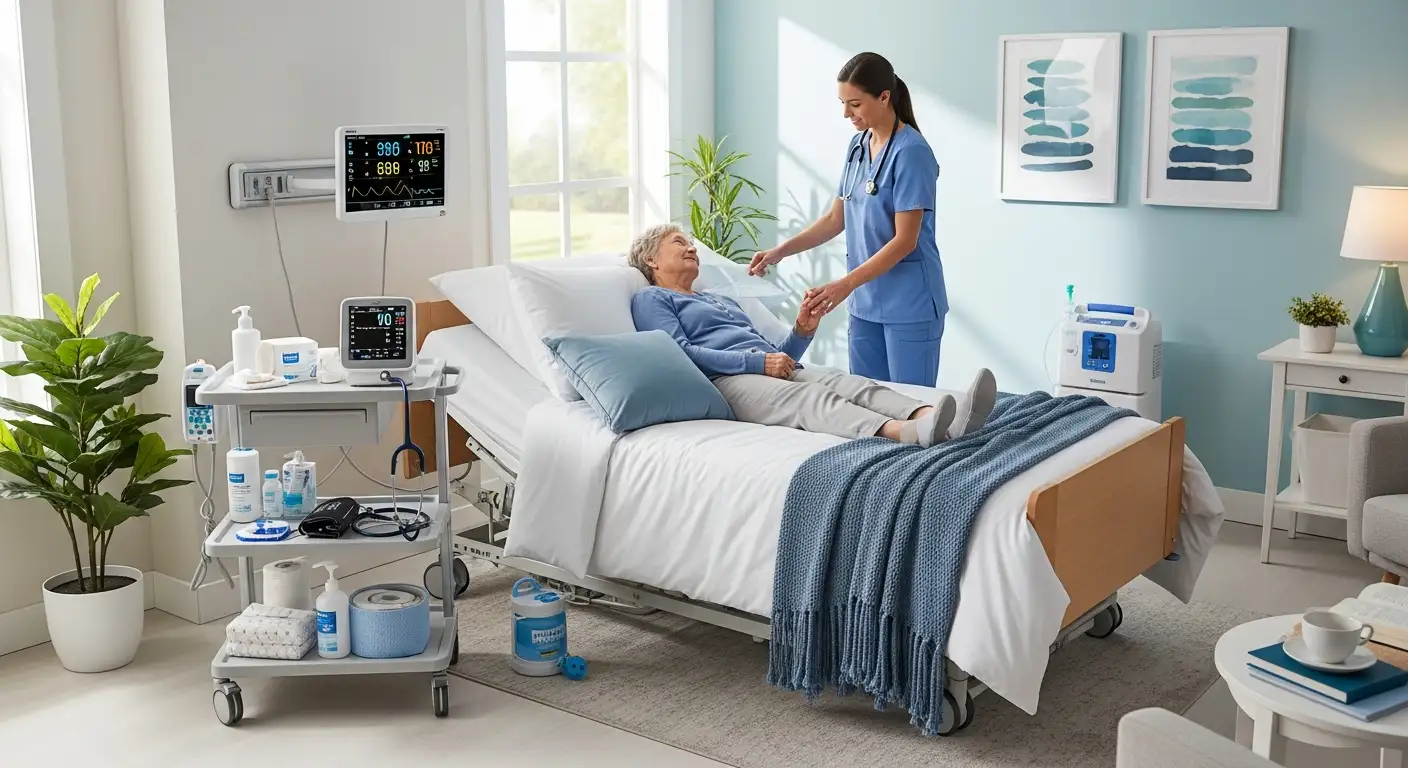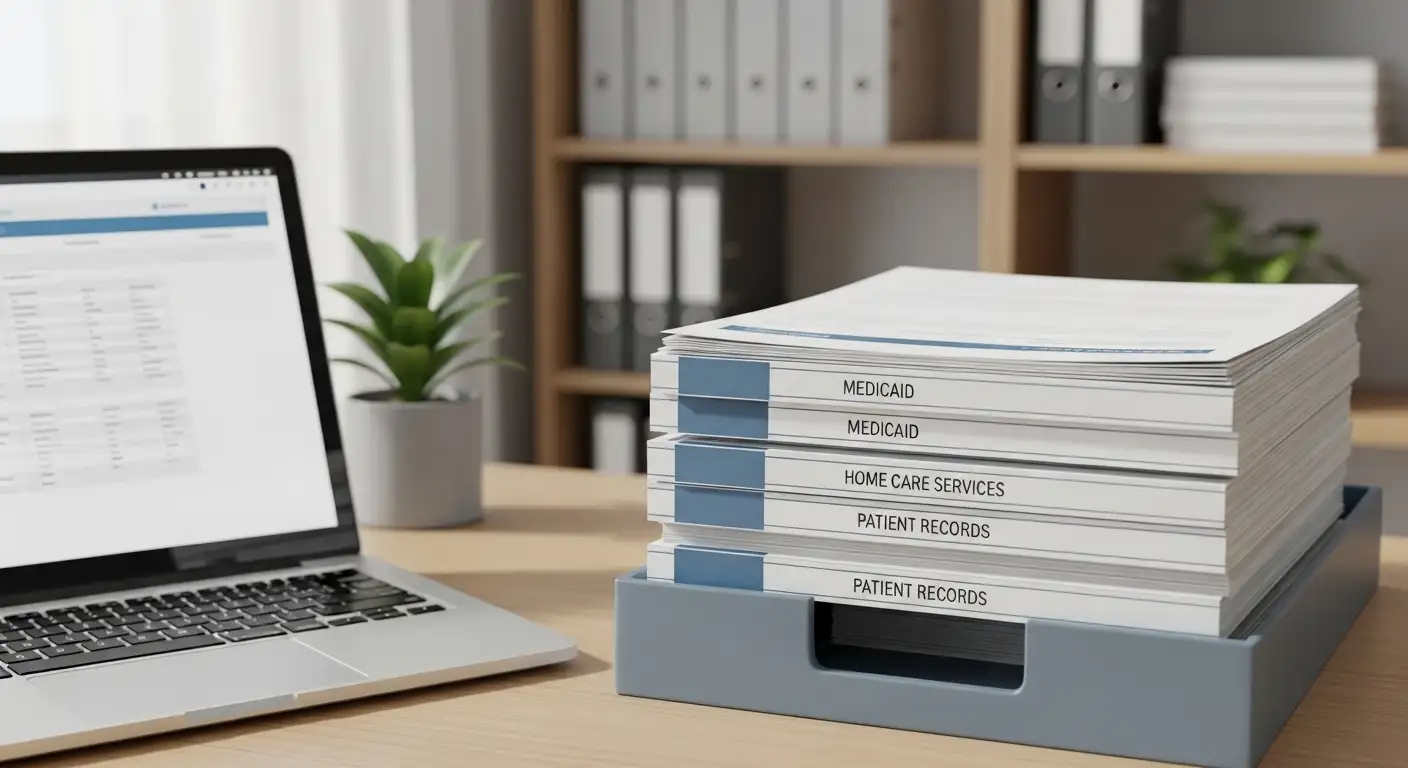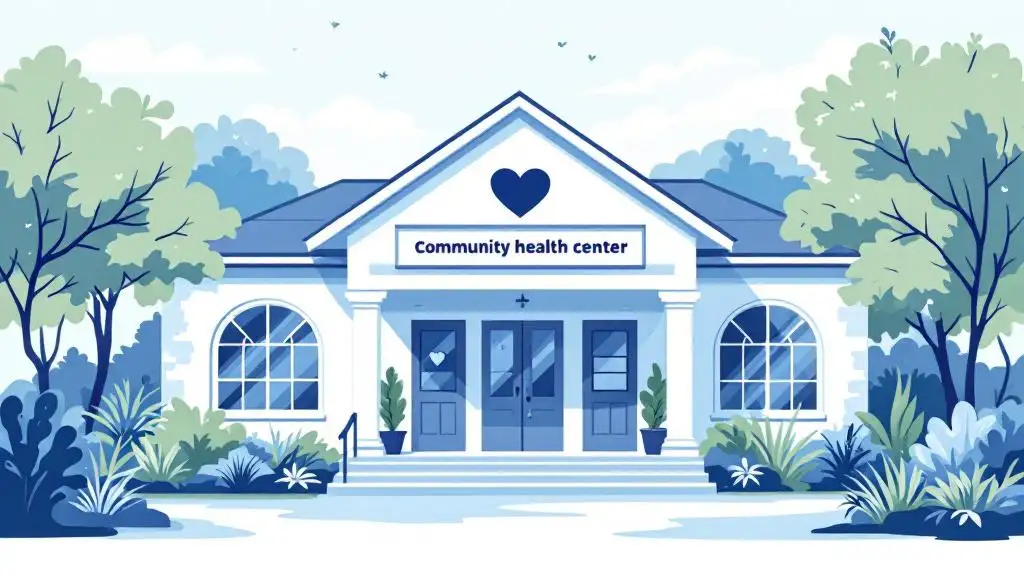The financial advantages of Medicaid waiver home care
Unlocking Cost-Effective Care: How Medicaid Waivers Transform Home Health Services

Understanding Medicaid Waiver Home Care and Its Economic Benefits
Medicaid waiver home care programs are revolutionizing the landscape of in-home care by providing tailored, financially accessible options that help elderly and disabled individuals receive necessary support without the high costs typical of traditional care settings. This article explores the extensive financial advantages these programs offer to recipients and their families, detailing how various waiver programs empower consumers to direct their own care while offering significant cost savings compared to institutional options.
Medicaid Waivers: A Gateway to Affordable In-Home Care
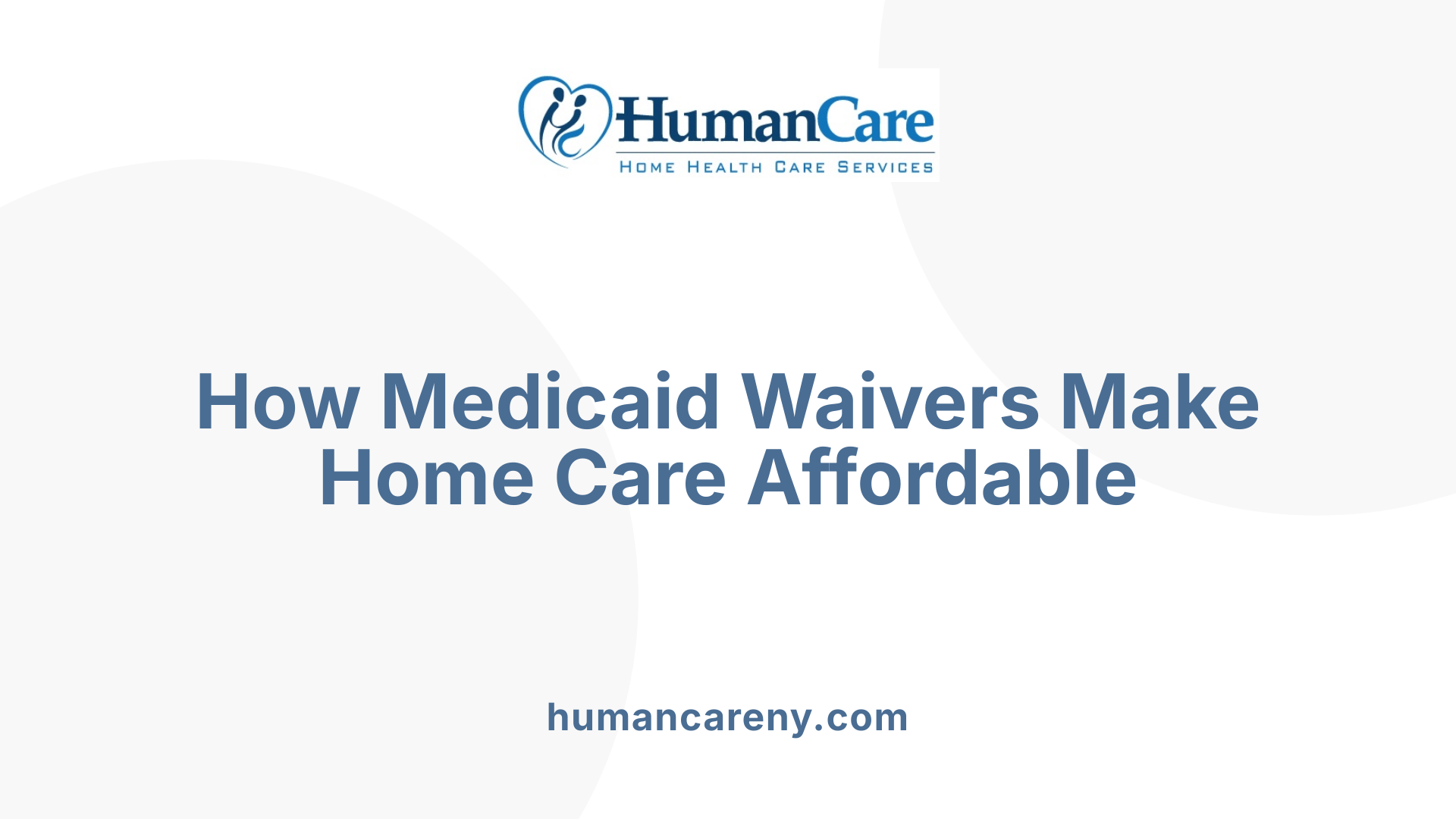
What are Medicaid waivers and how do they relate to home care?
Medicaid waivers, including the 1915(c) and 1115 Demonstration Waivers, allow states to offer home and community-based services outside of the regular Medicaid state plan. These waivers make it possible for individuals to receive care tailored to their specific needs, often allowing them to stay comfortably in their own homes instead of moving to institutional care.
Overview of Medicaid waivers and their purpose
The primary purpose of Medicaid waivers is to provide more flexible and participant-directed options for home care. These waivers cover a variety of supportive services such as case management, homemaker assistance, and respite care. By enabling personalized care plans, they help individuals maintain independence and improve quality of life while controlling Medicaid expenditures.
Key types of Medicaid waivers: 1915(c) and 1115 Demonstration Waivers
- 1915(c) Waivers: These waivers focus on home and community-based services for specific populations, such as elderly adults or persons with disabilities. They allow participant-directed services where beneficiaries can select and manage their caregivers.
- 1115 Demonstration Waivers: These provide broader flexibility for states to test and implement innovative care models, including expanded home care options.
Tailored care plans and participant-directed care
Medicaid waivers emphasize self-direction, meaning participants often control their care budgets and hire caregivers of their choice, including family members. This approach promotes autonomy and ensures that care arrangements fit individual preferences and needs. Financial management services are typically provided to assist with these responsibilities.
| Waiver Type | Population Served | Services Covered | Participant Role |
|---|---|---|---|
| 1915(c) | Elderly, Disabled, Developmental Disabilities | Personal Care, Case Management, Respite Care | High; choose and direct caregivers |
| 1115 Demonstration | Varied; statewide initiatives | Flexible home care & community services | Moderate to High, based on state design |
Financial Savings Through Consumer-Directed Care Options
How do consumer-directed care programs offer financial advantages?
Consumer-directed care programs provide significant financial benefits by enabling Medicaid recipients to hire and manage their own caregivers, often including family and friends. This arrangement reduces the reliance on agency-based care, which can be more expensive due to administrative and overhead costs.
Through programs such as the Self-Directed Personal Assistance Services (PAS) and broader consumer-directed personal care assistance initiatives available in all states and the District of Columbia, participants receive control over their care while simultaneously easing financial burdens. By employing family members or close acquaintances, recipients keep care within trusted relationships and avoid costly middlemen.
Financial management aspects are handled through intermediary services, which oversee payroll and compliance, streamlining payments to hired caregivers. This system ensures that family caregivers are compensated fairly and legally for their work, providing them a source of income without disrupting the continuity of care.
Additionally, Structured Family Caregiving programs provide financial support to unpaid caregivers living with the care recipient, offering training and respite care alongside payment opportunities. These measures not only enhance care quality but also offer monetary relief to families.
By combining personalized care choices with efficient financial management and remuneration options, consumer-directed care programs offer an effective path for cost savings and enhanced caregiving experiences under Medicaid.
Income and Asset Eligibility – Making Home Care Possible
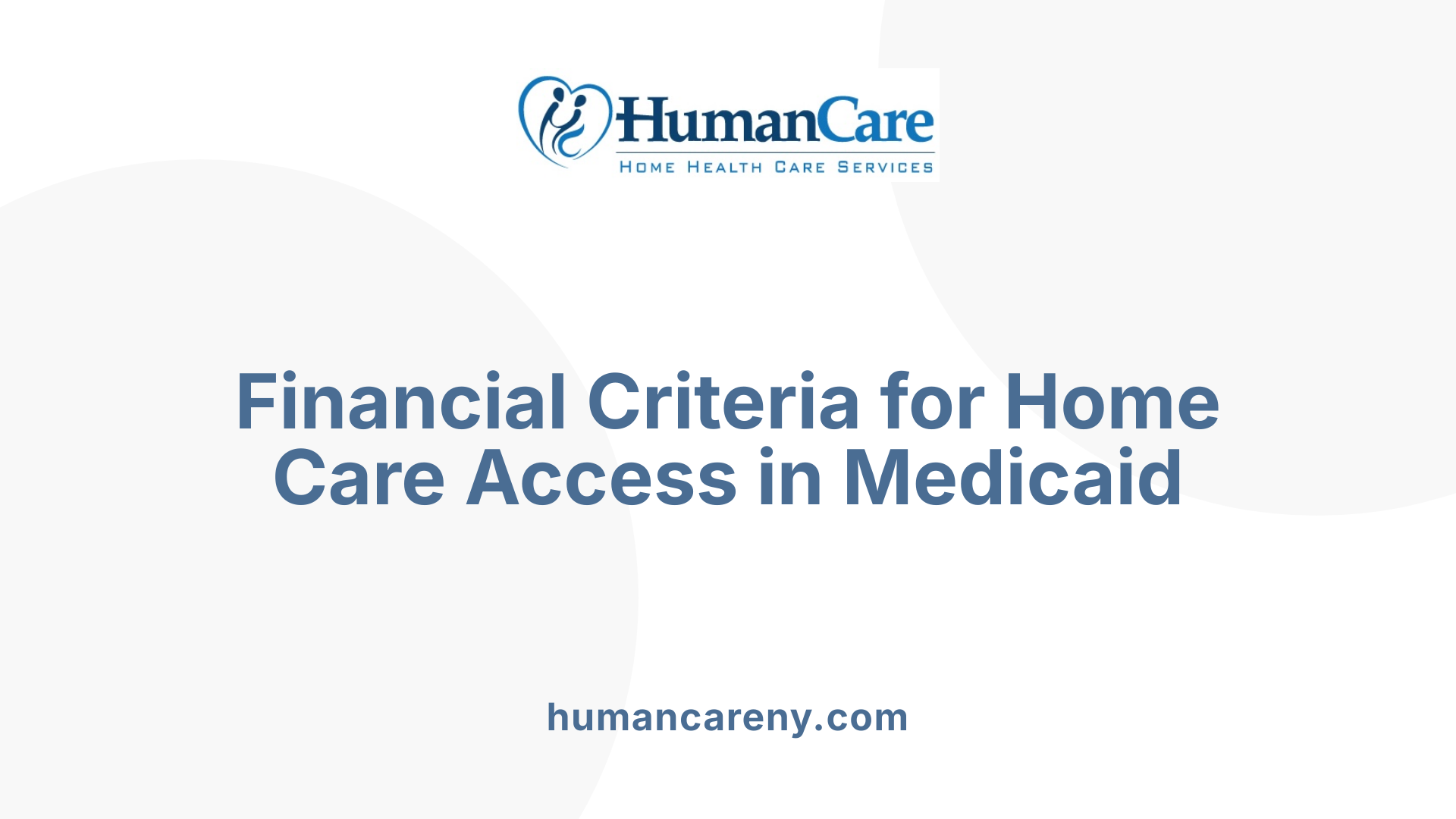
What financial eligibility criteria exist for Medicaid waiver home care?
To qualify for Medicaid-funded home care through waiver programs, applicants must meet specific income and asset limits set for the year 2025.
Income limits for HCBS waiver applicants
Individuals applying to senior Home and Community Based Services (HCBS) waiver programs generally must have a monthly income below $2,901. This figure represents approximately 300% of the Supplemental Security Income (SSI) limit and ensures that Medicaid resources are targeted to individuals who lack sufficient funds to afford care independently.
Asset caps for Medicaid home care eligibility
In addition to income limits, asset restrictions apply. Applicants' countable assets are typically capped at $2,000. This asset cap includes resources such as savings and checking accounts but excludes certain protected assets like a primary residence.
Eligibility differences between Regular Medicaid and waiver programs
Regular Medicaid programs often have lower income thresholds than HCBS waivers. Some individuals may qualify for personal care services under the state plan with tighter financial criteria, while waivers often provide more comprehensive, participant-directed services but require income and asset limits aligned with federal guidelines.
These income and asset guidelines are designed to make home care accessible to seniors and individuals with disabilities who would otherwise face financial barriers. By setting these limits, Medicaid ensures that funding supports those most in need of assistance to remain in their homes safely and with dignity.
Medicaid Coverage Scope: Services That Save Money and Enhance Care
What services are covered under Medicaid waiver home care that reduce the need for institutional care?
Medicaid waiver programs provide a variety of personal care services that enable individuals to remain in their homes rather than moving to institutional or assisted living facilities. These services primarily focus on assistance with activities of daily living (ADLs) including bathing, dressing, and other essential self-care tasks.
In addition to support with ADLs, Medicaid waivers often cover homemaker services that help with household chores, case management to coordinate the individual's overall care, and respite care to offer temporary relief to family caregivers. This comprehensive coverage enhances the quality of home care and reduces the reliance on more costly institutional care options.
Types of personal care services covered
- Assistance with activities of daily living (bathing, dressing, toileting)
- Homemaker services (light cleaning, meal preparation)
- Case management services for coordinating care
- Respite care to provide temporary caregiver relief
Activities of daily living assistance
Helping with daily self-care activities is central to Medicaid's home care services. These tasks support personal hygiene, mobility, and nutrition, which are vital for maintaining independence and health.
Additional services like respite care and case management
Respite care services offer crucial breaks for unpaid or family caregivers, preventing burnout and sustaining long-term caregiving relationships. Case management ensures that each recipient's care plan is tailored to their needs and allows for adjustments as conditions change.
Through these offerings, Medicaid waivers play a significant role in delivering cost-effective, quality home care that meets the diverse needs of elderly individuals and people with disabilities.
Structured Family Caregiving: Financial Support for Unpaid Caregivers
How does Structured Family Caregiving financially benefit those providing unpaid care?
Structured Family Caregiving (SFC) programs provide crucial financial support to unpaid primary caregivers who live with the care recipient. This support enables family members to receive payment for their caregiving services, helping to alleviate the economic burden often associated with providing full-time care.
Support mechanisms for unpaid family caregivers
Beyond direct financial compensation, SFC programs often include additional support mechanisms such as training and respite care. Training ensures caregivers have the knowledge and skills needed to provide effective care, while respite care offers temporary relief, helping to reduce caregiver stress and burnout.
Training and respite care as part of Medicaid waivers
These supportive elements are frequently embedded within Medicaid Home and Community Based Services (HCBS) waivers, which allow states to tailor services to individual needs. Respite care is particularly important as it provides caregivers with scheduled breaks, enabling them to rest and recharge while maintaining continuous care for their loved ones.
Structured Family Caregiving programs
By combining financial assistance with training and respite services, Structured Family Caregiving programs empower families to sustain caregiving roles without sacrificing income or personal well-being. This holistic approach ensures better care quality and improves the overall stability of home-based care arrangements.
The Caretaker Child Exception: A Unique Medicaid Advantage
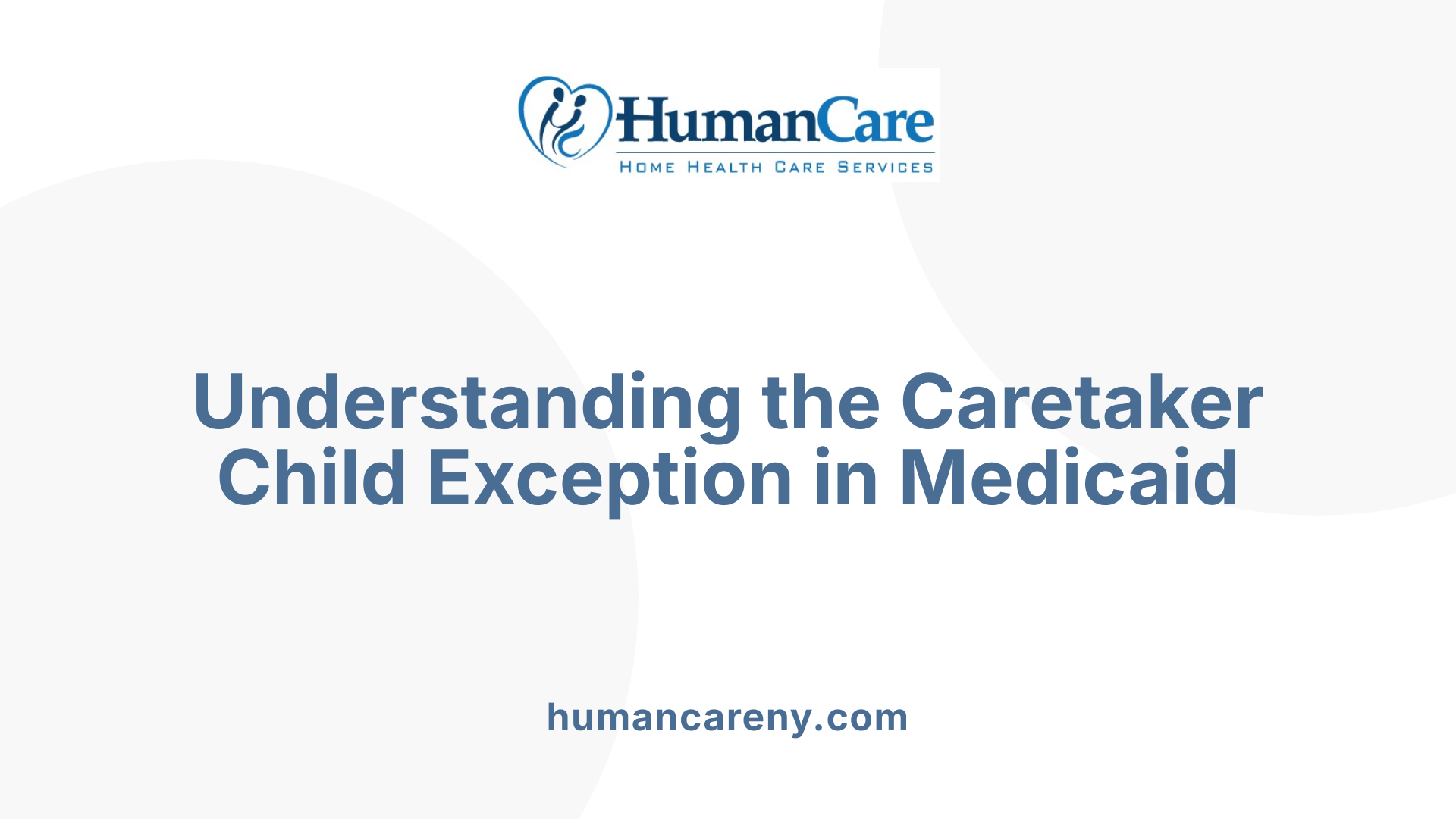
What is the Caretaker Child Exception in Medicaid, and how does it financially assist families?
The Caretaker Child Exception is a special Medicaid provision that helps families financially when an adult child has been the primary caregiver for a parent. Instead of receiving direct payment for caregiving services, the adult child may be compensated through the transfer of home ownership. This means the home can be transferred to the caregiving child, providing a form of financial support while recognizing their essential role without the complexities of wage payment.
This exception benefits families by easing the financial burden often associated with caregiving. It ensures that adult children who have lived with and cared for their parents receive fair compensation, helping maintain family stability. The provision is particularly valuable in cases where direct payment from Medicaid might not be feasible or desired.
By enabling home transfer rather than cash payments, the program supports families in preserving assets and promoting continuity in care. It also aligns with Medicaid's broader goals of supporting in-home care and avoiding institutionalization, ultimately benefiting both caregivers and recipients in the Medicaid system.
Managed Care Models and Their Role in Cost Efficiency
Delivery of Medicaid home care through managed care
Most states implement managed care models to deliver Medicaid home care services. Under this system, state Medicaid agencies contract with managed care organizations (MCOs) to coordinate and oversee the provision of care. This approach shifts the focus from fee-for-service payments to managed care plans that integrate various services, including personal care assistance, case management, and respite care, tailored to meet individual needs.
Coordination and predictability of services
Managed care models enhance the coordination of services by providing a centralized entity responsible for managing care plans. This leads to more predictable and streamlined service delivery, ensuring that beneficiaries receive appropriate and timely care. By reducing overlaps and gaps in services, managed care promotes better health outcomes and improved recipient satisfaction.
Impact on financial outcomes for recipients and states
From a financial standpoint, managed care models help states control Medicaid home care expenditures effectively. By capping payments and using utilization management strategies, MCOs reduce unnecessary or redundant services, which leads to better cost containment. For recipients, this means receiving comprehensive care without unexpected interruptions or excessive expenditures. Overall, managed care enhances resource allocation efficiency, benefiting both state budgets and Medicaid beneficiaries.
How do managed care models affect the financial benefits of Medicaid home care?
Most states use managed care models to coordinate Medicaid home care, which helps control costs through predictable care delivery, reduces redundant services, and improves overall efficiency. This approach optimizes state budgets while maintaining quality care for recipients. The resulting financial benefits include sustainable program funding and controlled growth in home care spending, contributing to Medicaid covering approximately two-thirds of all home care costs nationally.
Scope and Scale: Medicaid’s Role in National Home Care Spending

What is Medicaid’s role in funding home care across the United States?
Medicaid plays a dominant role in funding home care services across the country. In 2022, it covered about two-thirds of all home care spending nationwide. This substantial financial support helps nearly 4.5 million individuals receive home care services annually as of 2024.
How many people benefit from Medicaid home care services?
Approximately 4.5 million people rely on Medicaid to access home care services each year. These services cover a broad range of needs, from assistance with daily activities like bathing and dressing to household chores. This widespread use underscores the program’s importance for both elderly individuals and those with disabilities.
What impact does Medicaid funding have on the affordability of home care?
By shouldering the majority of home care costs, Medicaid significantly increases the affordability and accessibility of these services nationwide. Without this support, many individuals would face difficulty affording consistent and quality care at home. Medicaid’s coverage allows people to remain in their communities and avoid expensive institutional care, further emphasizing its essential role in long-term care planning.
Specialized Waiver Programs Targeted to Population Needs

How do specialized Medicaid waivers enhance financial benefits for diverse populations?
Specialized Medicaid waivers provide tailored support for various populations, including the elderly, individuals with disabilities, and people living with specific conditions such as HIV/AIDS. By customizing services, these waivers align more closely with participants' unique care needs, making care more effective and cost-efficient.
Programs for elderly, disabled, and specific conditions
Several waiver programs are designed to target specific groups, enhancing both care quality and financial support:
- Elderly & Disabled Home and Community Based Waiver Program: Offers services like Personal Care, Adult Day Services, Emergency Response System, and Respite Care.
- Assisted Living Waiver Program: Supports access to care within licensed assisted living facilities.
- AIDS/HIV Waiver Program: Provides Case Management, Personal Care, Respite Care, and Supplemental Nutrition tailored to the needs of individuals living with HIV/AIDS.
- Developmental Disabilities Waiver Program: Includes services such as Day Habilitation, Residential Habilitation, and Respite Care focused on intellectual and developmental disability support.
Customization for better financial management
These waiver programs allow for participant-directed care and family involvement in caregiving roles, often utilizing financial management strategies to increase self-direction. By enabling participants to manage personal care budgets and select caregivers, including relatives, the programs promote autonomy while ensuring effective cost controls. This personalized approach reduces reliance on costly institutional care and improves quality of life for Medicaid recipients.
| Waiver Program | Target Population | Key Services Provided |
|---|---|---|
| Elderly & Disabled HCBS Waiver | Elderly and people with disabilities | Personal Care, Adult Day Services, Emergency Response, Respite |
| Assisted Living Waiver | Residents in Assisted Living Facilities | Medicaid services in licensed assisted living settings |
| AIDS/HIV Waiver | Individuals with HIV/AIDS | Case Management, Respite Care, Supplemental Nutrition |
| Developmental Disabilities Waiver | Individuals with developmental disabilities | Day and Residential Habilitation, Respite Care |
Maximizing Financial Benefits through Medicaid Waiver Home Care
Medicaid waiver home care programs offer a transformative financial alternative to costly institutional care by empowering individuals and families to access personalized, affordable in-home support. Through consumer-directed options, structured family caregiving, and specialized waiver programs, recipients experience significant cost savings while maintaining quality of life. Understanding eligibility criteria, service options, and program structures enables families to optimize these benefits, making Medicaid waiver home care a vital resource in managing long-term care expenses effectively.


